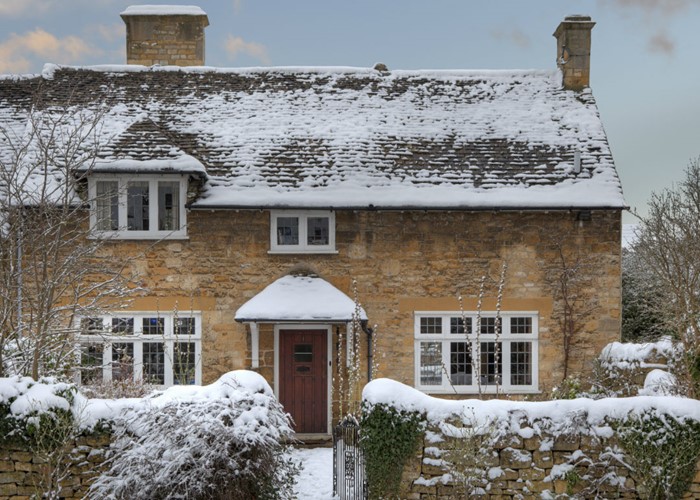The best and worst properties to own

We've crunched the numbers to find you the properties that increase in value fastest...
In February 2008, I analysed data from the Halifax House Price Index (HHPI) in order to find out which properties increase in value the most and which homes lag behind.
Of course, a lot has happened in the past 22 months. After peaking in August 2007, house prices slumped by more than a fifth (21%) before bottoming out this spring. Since then, they've bounced back, but I expect them to start falling again soon.
Halifax HPI data for UK (1983-2009)
As I explained in my previous analysis, the HHPI doesn't separate out its data based on property types, so I can't individually analyse flats, terraced, semi-detached and detached homes. However, we will review the five datasets which the Halifax does produce, as follows:
1. All properties
|
Quarter |
Price |
|
Q1 1983 |
£29,638 |
|
Q3 2009 |
£162,689 |
|
Change (£) |
£133,051 |
|
Change (%) |
449% |
|
Yearly change (%) |
6.6% |
(It's amazing to think that, in early 1983, the typical home sold for under £30,000. Today, that wouldn't even be a decent deposit for a family home!)
As you can see, over the past 26½ years, the value of a typical property has risen by 449%. In other words, the average value is almost 5½ times what it was in 1983. This works out at a compound annual growth rate of 6.6%, which is a lot lower than the 10%+ yearly rises of the recent housing boom.
However, as I often remark, "Averages invite comparisons", so let's take a look at how property prices have varied based on property and buyer types:
2. New properties
|
Quarter |
Price |
|
Q1 1983 |
£33,585 |
|
Q3 2009 |
£169,899 |
|
Change (£) |
£136,314 |
|
Change (%) |
406% |
|
Yearly change (%) |
6.3% |
As you can see, new properties have risen in value more slowly than average, rising at only 6.3% a year over the past 26½ years.
One possible reason for this is that building booms during periods of high house prices can flood the market with new properties and push down prices. For example, new-build flats in city centres have suffered from severe price falls over the past two years.
Of course, all new properties move into our next category once they are sold on:
3. Existing properties
|
Quarter |
Price |
|
Q1 1983 |
29,136 |
|
Q3 2009 |
163,189 |
|
Change (£) |
134,053 |
|
Change (%) |
460% |
|
Yearly change (%) |
6.7% |
As you can see, the price of existing properties has remained lower than those for new properties in our 26½-year survey. However, far more existing properties are sold each year than new properties. What's more, the yearly increase in the price of existing properties is 6.7%, which is 0.4% a year higher than that for new properties.
This improved growth could be because new properties come with a 'new-build premium' which evaporates when they are sold on. Also, new-build properties tend to come with upfront incentives such as cashback which artificially inflates their first-sale price.
Thus, if you want to maximise your capital growth, it could be better to go for existing, rather than new, properties. Over long periods, the extra gain of 0.4% a year could boost your profits.
4. First-time buyers
|
Quarter |
Price |
|
Q1 1983 |
21,468 |
|
Q3 2009 |
121,437 |
|
Change (£) |
99,969 |
|
Change (%) |
466% |
|
Yearly change (%) |
6.8% |
As you'd expect, first-time buyer (FTB) homes are cheaper than those bought by buyers reaching up for the next rung of the ladder. Of course, FTBs generally have lower wages and smaller deposits and, therefore, cannot stretch to the higher prices which home movers pay.
Nevertheless, the yearly rate of growth for FTB homes is 6.8% a year, which is higher than that for home-mover properties. However, absolute returns in pound terms are lower for FTBs, because they buy cheaper properties when they start out.
Now let's see how prices have fared for home movers:
5. Home movers
|
Quarter |
Price |
|
Q1 1983 |
34,705 |
|
Q3 2009 |
187,174 |
|
Change (£) |
152,469 |
|
Change (%) |
439% |
|
Yearly change (%) |
6.6% |
As you can see, home movers have always paid higher prices than FTBs, which reflects their higher incomes and existing housing gains. Then again, there are far more home movers than FTBs, so their yearly gain of 6.6% is very close to the average for all properties of 6.6% (see 1 above).
Home, sweet home?
In summary, it could be said that the biggest gains from the housing market accrue to home movers who avoid buying new properties. Also, sticking with the same house for decades could, in some cases, be the wrong sftrategy. Then again, it's clear that being a first-time buyer can be highly profitable, but it's obviously best to avoid entering the market near the top (for example, by overpaying for a new-build flat).
Lastly, since I wrote my original article 22 months ago, the average yearly increase in property prices has slumped from 8% to 6.6%. This is largely due to prices going south from mid-2007 onwards. Therefore, when doing the sums on investment properties, I'd recommend you factor in at least one housing crash per decade. Otherwise, your capital gains could be far less than you'd hoped for!
More: Find your ideal mortgage | Why first-time buyers should think twice | 21 ways to storm-proof your home
Comments
Be the first to comment
Do you want to comment on this article? You need to be signed in for this feature